परिचय
India’s economic liberalization in 1991 was a comprehensive stabilization-and-reform program launched amid a balance-of-payments crisis, orchestrated by Prime Minister P.V. Narasimha Rao and Finance Minister Dr. Manmohan Singh, that dismantled the “License Raj,” devalued the rupee, opened trade and investment, and reoriented the economy toward market-led growth through the New Industrial Policy (24 July 1991) and supporting measures in the 1991 Union Budget.
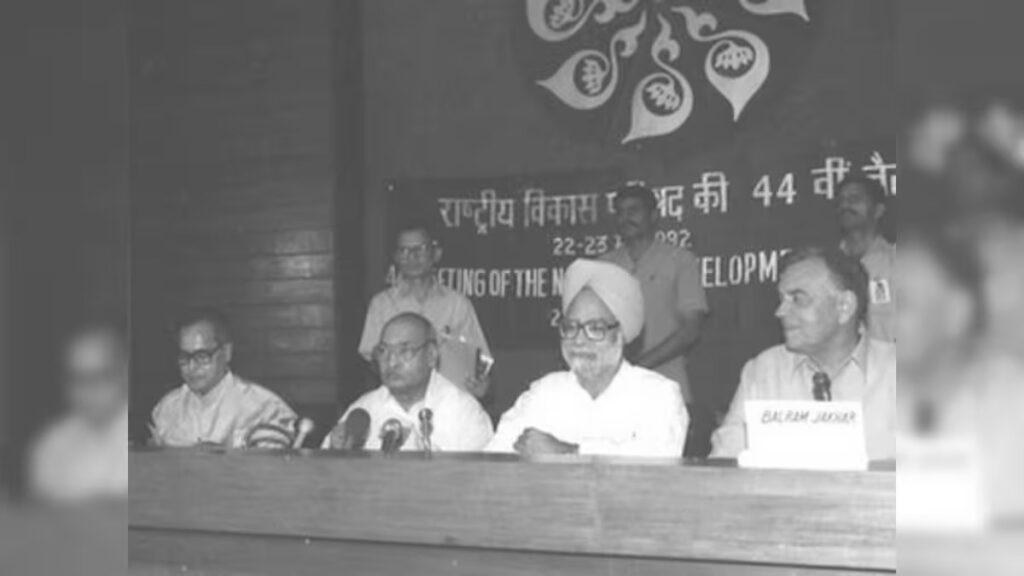
Background: Crisis and the turn to reforms
- By mid-1991, foreign exchange reserves had dwindled to weeks of import cover, forcing emergency measures, including pledging gold abroad and seeking IMF/World Bank support.
- The rupee was sharply devalued in two steps—on 1 July and 3 July 1991—after reserves were nearly depleted, as part of immediate stabilization to restore confidence and boost exports.
- An IMF Stand-By Arrangement was sought in August 1991, alongside a World Bank structural adjustment loan in November, anchoring fiscal consolidation and structural reforms.
What changed: The reform pillars (LPG)
- Liberalization: Industrial licensing was abolished for most industries; MRTP-era expansion controls on large firms were removed; trade licensing/quantitative restrictions were eased, and capital goods imports liberalized.
- Privatization: Public sector dominance was reduced via disinvestment and referral of unviable PSUs to BIFR, with a progressive opening of sectors to private/foreign participation.
- Globalization: Trade barriers were lowered, the exchange rate adjusted, and FDI policies liberalized (automatic approval up to 51% equity in high-priority industries; creation of FIPB), integrating India with the global economy.
New Industrial Policy, 24 July 1991: Core features
- Industrial licensing abolished for most sectors; only a small negative list remained (e.g., defense, hazardous items).
- Public sector reservation narrowed sharply from earlier lists; private entry permitted in many previously reserved areas.
- FDI reforms: Majority foreign ownership (up to 51%) was allowed in designated industries to attract capital and technology; NRIs received expanded investment facilities.
- Technology agreements liberalized, enabling higher lump-sum payments and royalties for approved collaborations to accelerate modernization.
Immediate stabilization measures (mid-1991)
- Two-step rupee devaluation on 1 and 3 July 1991 to restore competitiveness and relieve the external constraint.
- Monetary tightening and fiscal restraint to curb inflation and stabilize the current account, embedded in the IMF-backed program adopted from July–August 1991.
Financial, trade, and capital-market reforms
- Banking: Greater autonomy in interest-rate setting, with a gradual shift from administered rates to market-linked structures to improve intermediation.
- Capital markets: Strengthening of stock market regulation and development of market institutions to channel savings more efficiently.
- Trade regime: Progressive dismantling of import licensing/QRs, tariff rationalization, and facilitation for exporters to import inputs.
External support and conditionality
- IMF Stand-By Arrangement (Aug 1991) and World Bank structural adjustment (Nov 1991) supported India’s reform program aimed at stabilization plus structural change, including deregulation, FDI opening, trade liberalization, and public enterprise reform.
Political economy and implementation
- The Rao government, despite being a minority, pushed through the 1991 Budget and policies; opposition criticized devaluation, subsidy cuts, and IMF influence, but the reform coalition held due to leadership resolve in Parliament.
Why reforms were needed
- Crisis drivers included chronic fiscal imbalances, weak export growth, external debt pressures, and overregulated industry that constrained productivity; the 1991 external shock exposed these structural weaknesses, compelling a decisive shift.
Key dates and timeline
- 1 & 3 July 1991: Two-step rupee devaluation as reserves neared exhaustion.
- 24 July 1991: New Industrial Policy announced, abolishing most industrial licensing and opening to FDI.
- August 1991: IMF Stand-By Arrangement approved (SDR 1,656 million).
- 12 November 1991: World Bank structural adjustment loan/credit sanctioned to back the reform agenda.
Impacts (short- to medium-term contours)
- Abolition of industrial licensing, loosening of MRTP restrictions, and FDI liberalization improved industrial dynamism and technology inflows.
- Exchange-rate adjustment, trade liberalization, and export facilitation enhanced external competitiveness and diversified the tradables base over the decade.
- Financial-sector steps set the stage for market-based intermediation and later private bank entry, raising efficiency in savings mobilization and credit allocation.
Critiques and concerns
- Early opposition focused on devaluation, inflation risks, fertilizer subsidy changes, and perceived IMF conditionality; worries included social impacts and adjustment costs in protected sectors.
- Subsequent debates highlighted uneven regional spread, employment absorption, and the need for deeper financial, labor, and land reforms to sustain inclusive growth.
Key figures and institutions
- P.V. Narasimha Rao (Prime Minister): Political architect who steered reforms through Parliament in 1991.
- Dr. Manmohan Singh (Finance Minister): Presented the 1991 Budget and reform roadmap.
- RBI, IMF, World Bank: Collaborated on stabilization, exchange-rate adjustment, and structural lending that supported the reform package.
Quick facts
- Trigger: Balance-of-payments crisis with reserves down to weeks of imports in mid-1991.
- Exchange-rate step: Two-step rupee devaluation on 1 and 3 July 1991.
- Policy milestone: New Industrial Policy on 24 July 1991 abolished most licensing and opened FDI up to 51% in priority industries.
- External support: IMF Stand-By (Aug 1991) and World Bank SAL (Nov 1991).
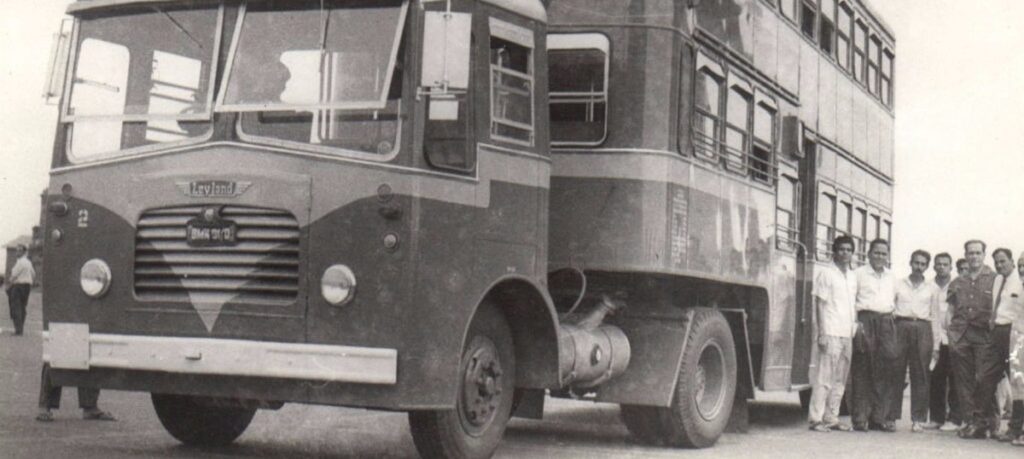
Interesting notes
- Gold pledge: As part of emergency measures, India pledged gold abroad in 1991 to raise foreign exchange while finalizing financing and reforms.
- From “License Raj” to market: The MRTP Act’s practical fetters on firm expansion were lifted, signaling a clear departure from decades of capacity controls.
- FIPB: A fast-track mechanism was set up to clear foreign investment proposals, a visible symbol of the pro-investment pivot.
निष्कर्ष
The 1991 liberalization reset India’s economic policy from controls to competition: a crisis-driven but durable shift that combined immediate stabilization (notably the July devaluation) with structural reforms—New Industrial Policy, trade/FDI opening, and financial-sector changes—anchored by IMF–World Bank support and strong domestic leadership, laying the foundations for accelerated, market-led growth in the decades that followed.

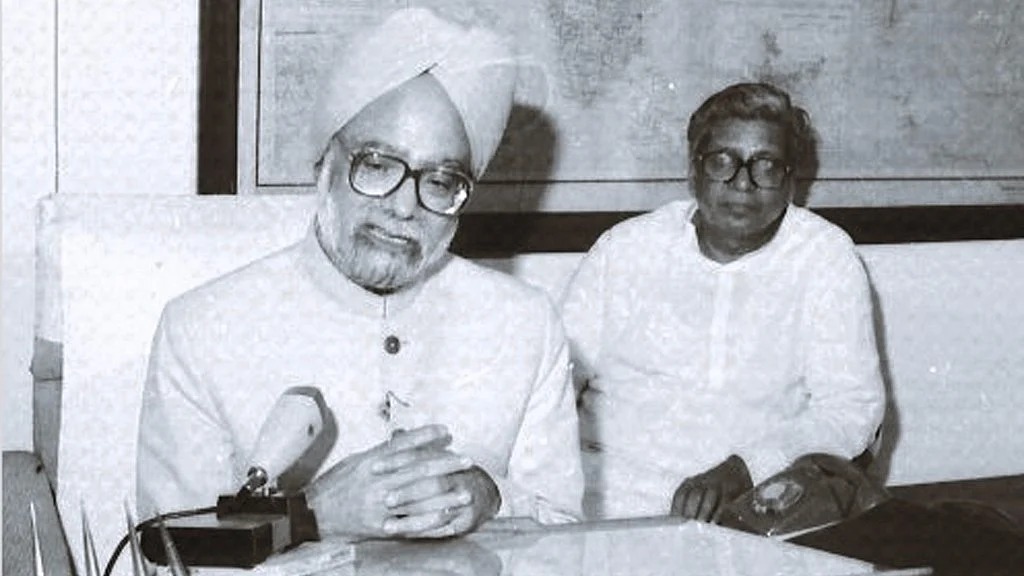



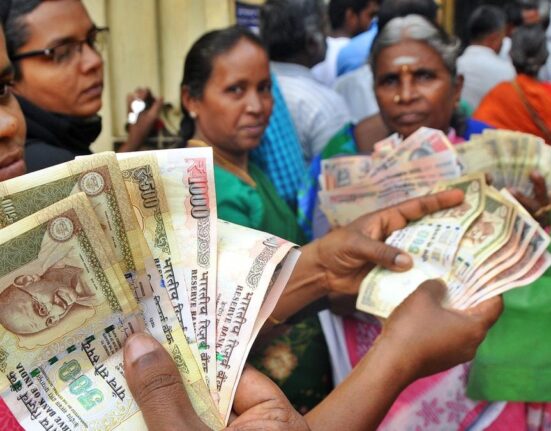
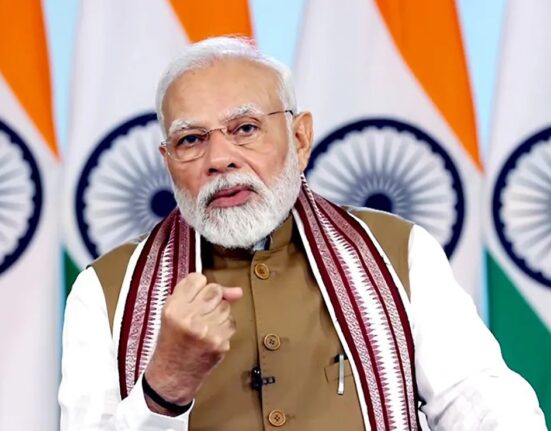

इस बारे में प्रतिक्रिया दें